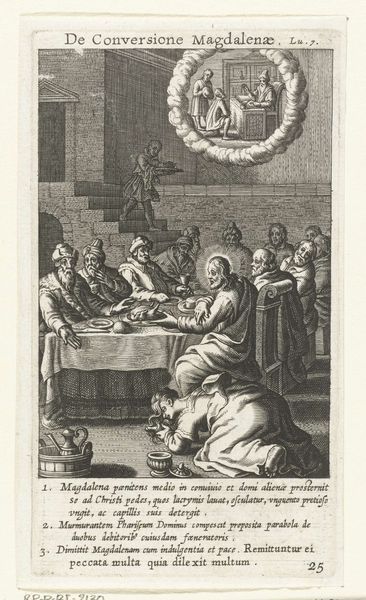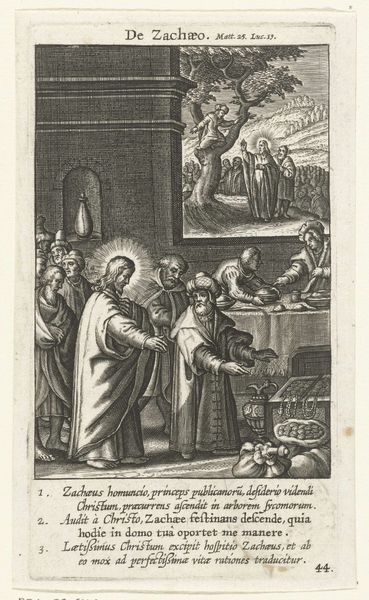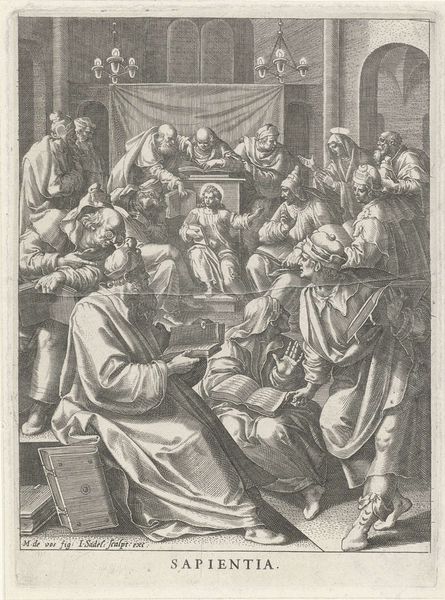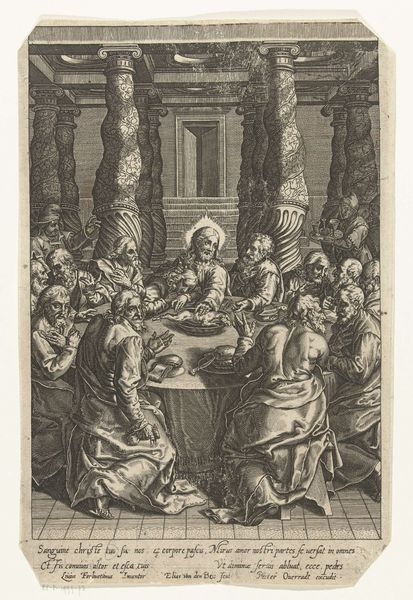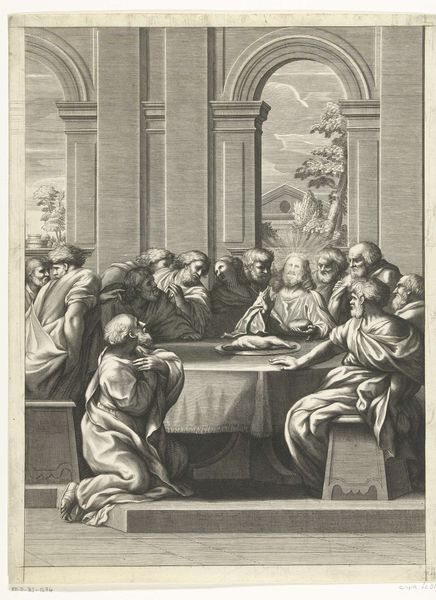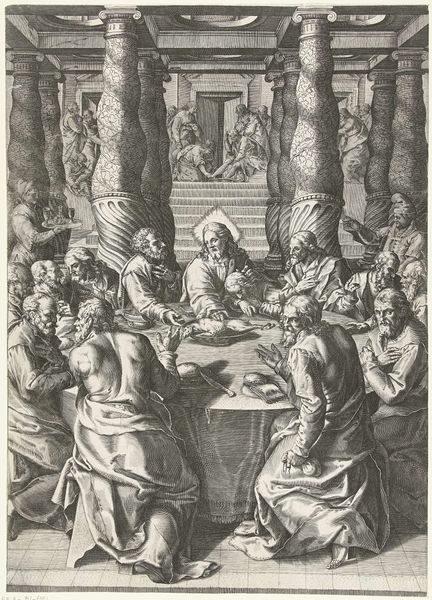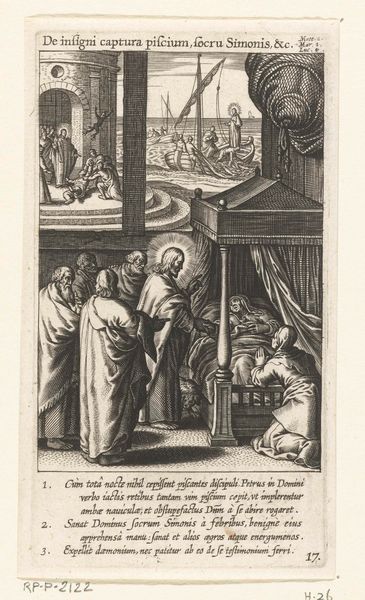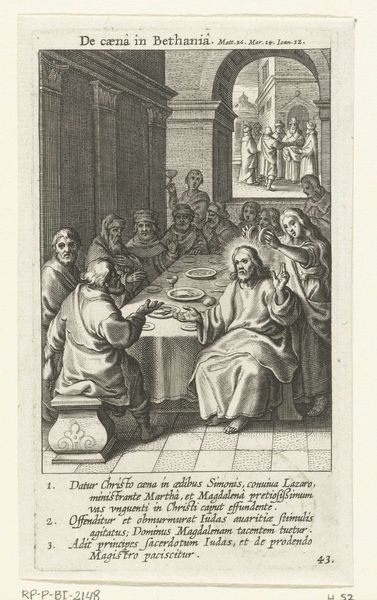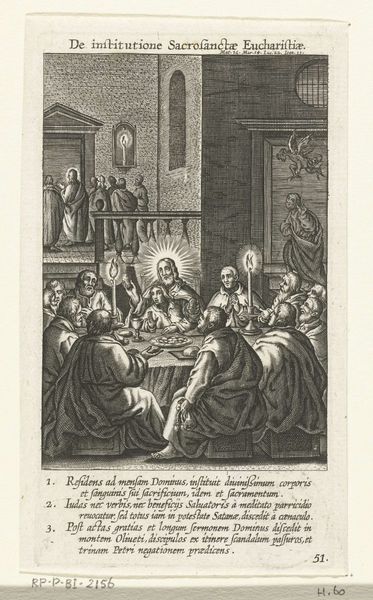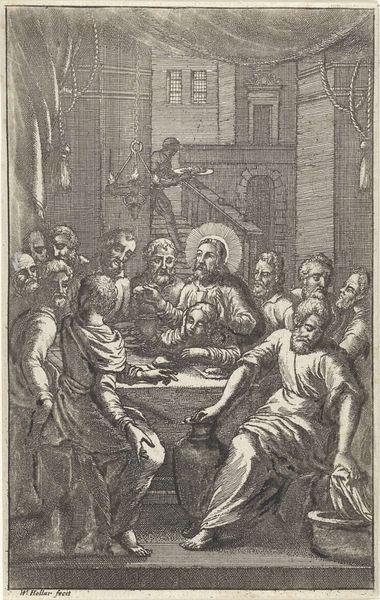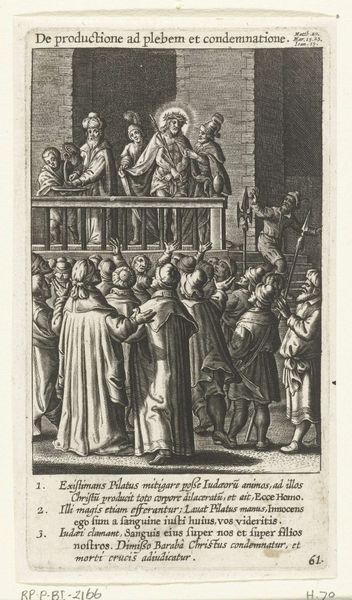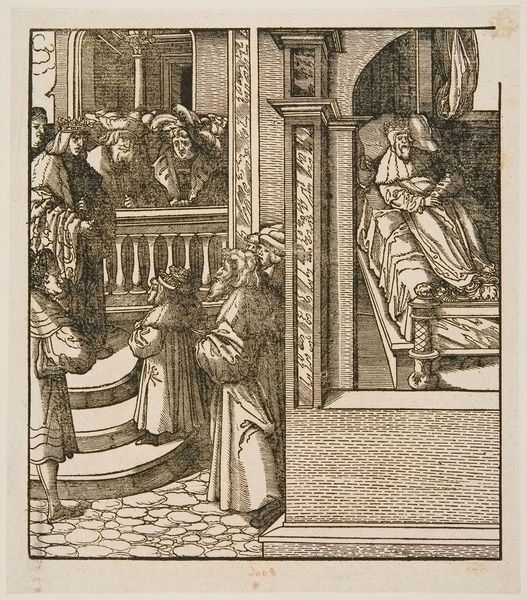
print, engraving
#
baroque
# print
#
figuration
#
history-painting
#
engraving
Dimensions: height 133 mm, width 75 mm
Copyright: Rijks Museum: Open Domain
Curator: This is an engraving entitled "Presentation of Christ in the Temple," created by Boëtius Adamsz. Bolswert, dating roughly from 1590 to 1622. It currently resides in the Rijksmuseum collection. Editor: My initial feeling is one of formality, even theatricality. The linear precision, almost cold, renders the holy scene as a set piece. There is little dynamism apart from all these eyes pointing to baby Jesus. Curator: The print showcases a key moment in Christian iconography: Mary and Joseph presenting the infant Jesus at the Temple in Jerusalem. From a historical point of view, such works reinforced religious doctrine and offered visual instruction to a largely illiterate public. Editor: But even beyond mere religious instruction, these images played a crucial role in shaping perceptions about power, gender, and religious authority. Note, for example, the women relegated to the periphery, the authoritative posture of the high priest. These visual cues reinforced hierarchies. The composition is clearly ordered with the more relevant figures in the foreground. Curator: That’s an astute observation. The artist also effectively used architecture and light to highlight the sacred event. Notice how the light focuses our eyes on the presentation while darker spaces lurk on the other part of the building. Editor: Right. I’m curious about the presence of the architecture dominating the artwork; the temple's rigid lines framing a moment theoretically about divine love. And also the composition is completely excluding the surrounding city outside of the holy building, as if holiness and mundane secularism could not coexist. Curator: Yes, indeed. It is critical to contextualize this print within the broader scope of the Baroque period when the representation of religious subjects was very formalized and regulated. Also, the distribution and exchange of those engravings have helped create common visual places and standardize them within European imaginary. Editor: Seeing this now, I'm reflecting on the complex ways religious institutions use imagery. As cultural products, artworks are never politically neutral. Curator: Precisely. Considering all these elements provides a richer and more nuanced appreciation of this work of art. Editor: Agreed, this deeper understanding is critical to interpreting artworks not just as beautiful forms, but as objects shaped by ideological intentions.
Comments
No comments
Be the first to comment and join the conversation on the ultimate creative platform.
